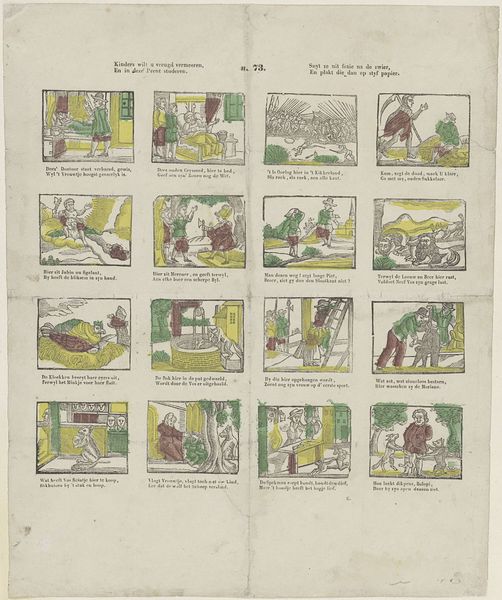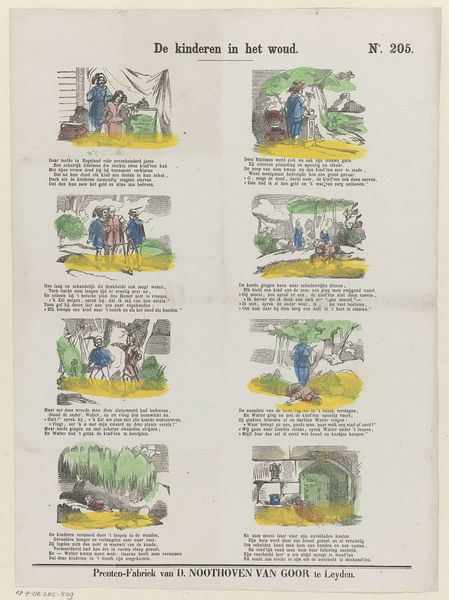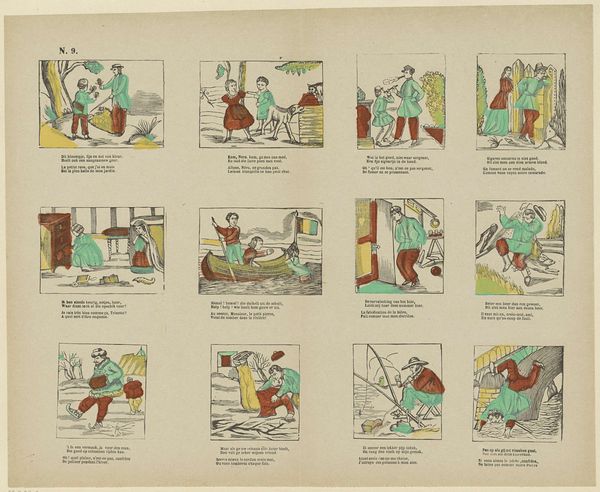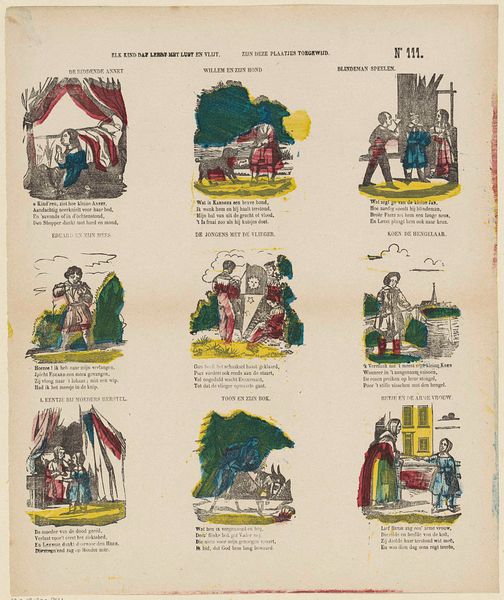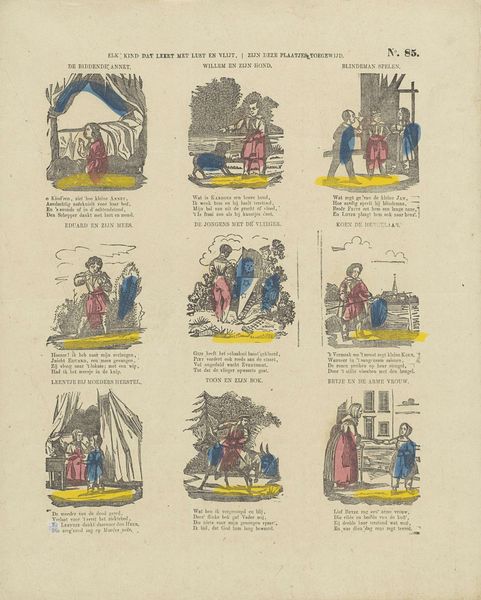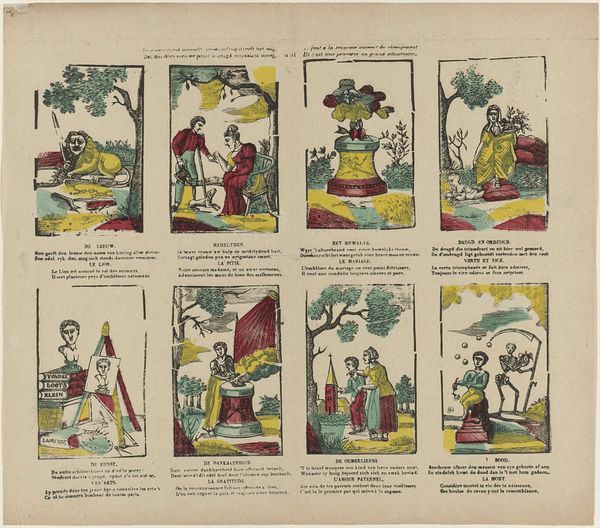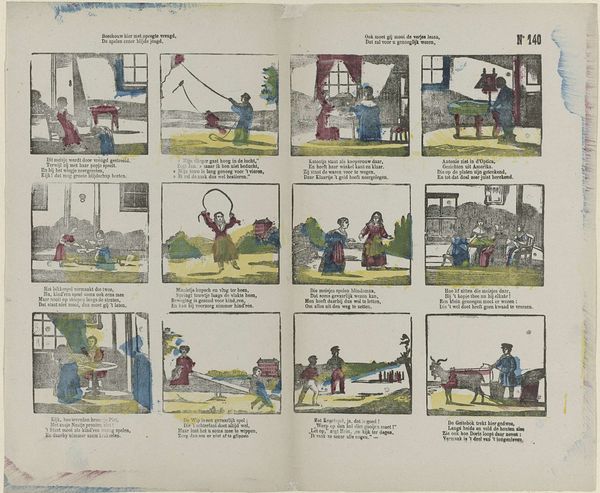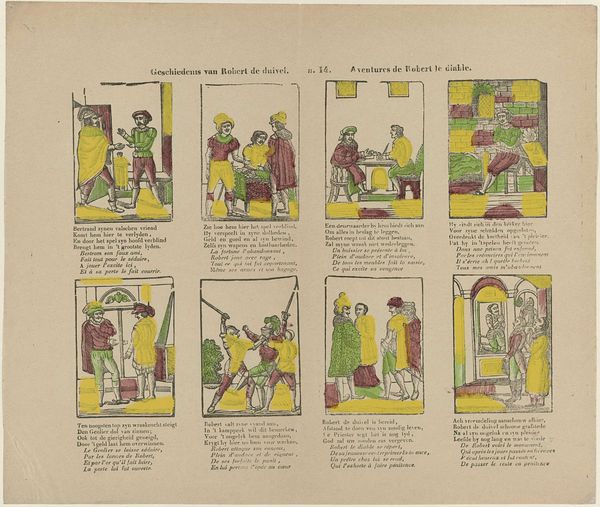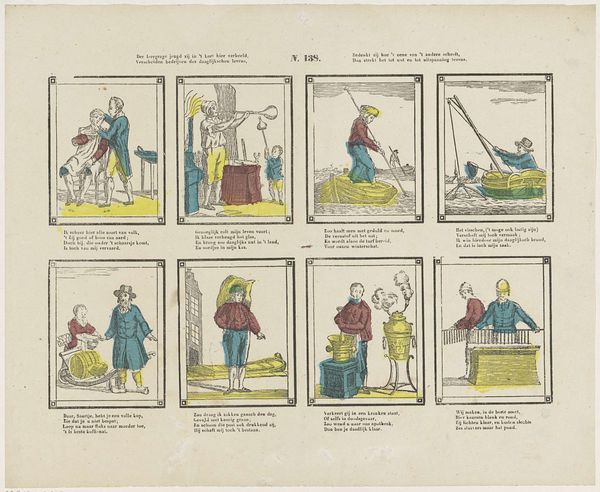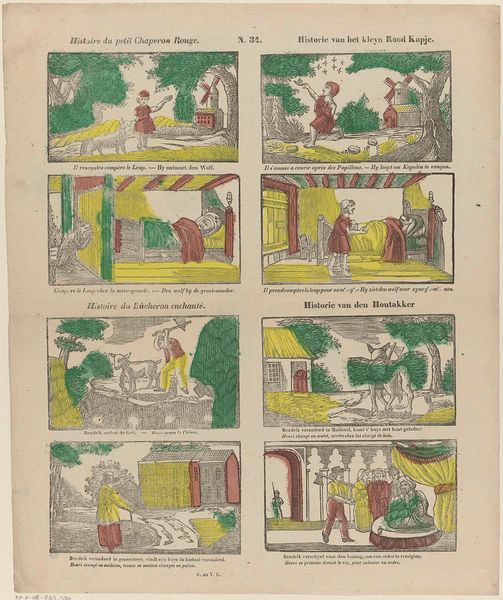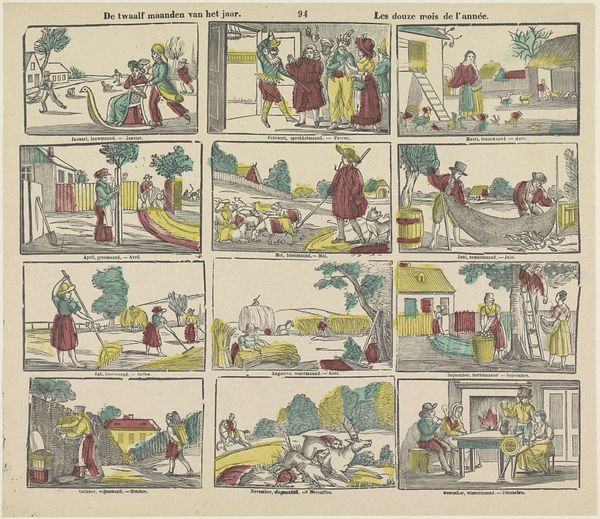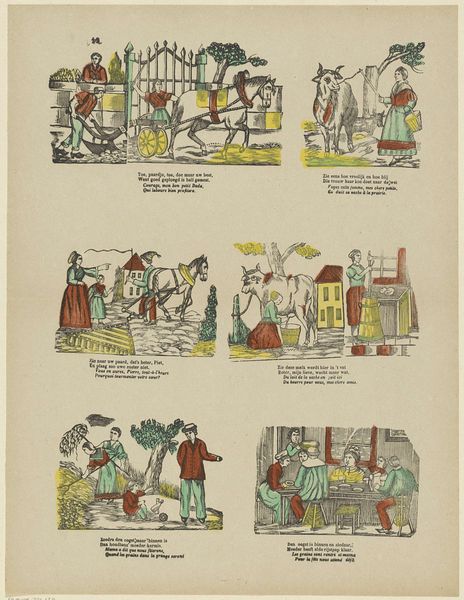
drawing, paper, ink
#
drawing
#
comic strip sketch
#
paper
#
ink
#
child
#
comic
#
genre-painting
Dimensions: height 334 mm, width 435 mm
Copyright: Rijks Museum: Open Domain
Editor: So this is "Kinderbezigheden," or "Children's Activities," by Franciscus Antonius Beersmans, likely created between 1866 and 1902. It looks like ink and perhaps watercolor on paper, presented almost like a comic strip sketch. It has this simple, nostalgic quality to it. What do you see in this piece? Curator: I see a deliberate construction of childhood ideals, mediated through the production and consumption of images. The materials themselves—cheap paper, basic inks—suggest a widespread availability, potentially intended for a burgeoning middle-class market interested in didactic imagery. Consider the labor involved in creating these multiple scenes. How might the printing process influence our reading of the depicted children’s activities? Editor: That's interesting! I was mostly focused on the charming depictions of children at play. So you’re saying the medium, not just the message, shaped its reception? Curator: Precisely. Look at the repetitive nature of the images, hinting at mass production. Does this repetition desensitize the viewer to the activities portrayed? Is this designed to teach morality, or simply to fill a commercial need for inexpensive entertainment? Furthermore, think about who would have consumed this image and where it was displayed. These factors contribute to its meaning just as much as the images themselves. Editor: So, instead of focusing on the cute children, you are more interested in who printed it and who bought it. It gives me a whole new perspective! Curator: It is crucial to understand that materiality is at the heart of meaning making. By exploring its conditions of production, distribution, and reception we better grasp the artistic project as embedded within social practice. Editor: I never really considered the economics of art beyond the price tag, but you're right, even this simple image has a complex backstory rooted in material and labor. Curator: Exactly! Now you are looking more closely to how the art functions, not just what it represents.
Comments
No comments
Be the first to comment and join the conversation on the ultimate creative platform.
